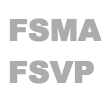Selling wine on tap in the United States: opportunities for producers and restaurateurs in America
Why wine on tap has become a key product for American bars and restaurants
In the United States it is now customary to sell wine on tap. Instead of buying bottles, many restaurant businesses in America order wine kegs: one keg is equivalent to nearly 30 bottles (120 glasses) and, on the production side, saves time by optimizing sales. When the barrels arrive at the restaurant, the restaurateur keeps them cool as if they were bottles and, once opened, they are tapped as one would do with kegs of beer.
Although wine on tap is still a modest market segment, we should note that it has transformed from a passing fad to a product with an enormous capacity for growth: restaurateurs have doubled their purchases of wine kegs, suggesting an increase in consumption well beyond expectations. And indeed, selling wine on tap is an easily implemented strategy, offering excellent profit potential and appealing to fewer traditionalist consumers who are more willing to freshen up the drinking experience of this alcoholic beverage.
Wine sales in the United States: there are more than 8000 companies marketing wine in the keg in America
The draft wine market in the USA
Wine on tap has become an attractive product for restaurants, bars, and wine shops. Moreover, the fact that it has weathered the pandemic by entering a phase of full expansion must be taken as an unmistakable sign of a significant business opportunity in the United States. Brands that began producing wine on tap more than a decade ago now boast partnerships with fast-food chains, and there are U.S. brands that specialize in producing and infusing mid- to high-end wines. There are an estimated more than 8,000 operators in the U.S. who have begun selling wine on tap in clubs, hotels, airports, fine dining, and fast casual restaurants - compared to just 4,700 in 2018, a sign that American consumers enjoy drinking wine in any format.
Anyone can sell wine on tap in the United States, whether it is low-cost or premium wine. The keg preserves the quality of the wine and its freshness by preventing oxidation and/or overheating: this way, the wine does not come into contact with air until the moment it is served and, ultimately, the last glass poured remains as fresh as the first. This is why the quality of keg wine in the American market has increased so much since the 2010s.
Here are some draft wine brands that are having success in the U.S. and can be found in bars, restaurants, and wine shops:
- Gotham Project, one of the first producers of wine barrels from American and European grapes.
- Swish Beverages, a wine brand that, in addition to selling wine on tap, produces wine in cans.
- Ken Wright Cellars bottles most of its wines, but in recent years has expanded the list of wines on tap available to the U.S.
- Bridge Lane has expanded its product portfolio with kegs of different types of wine, which once opened can maintain freshness for more than six months.
Several establishments in the United States have made wine on tap a successful business: Footprint Wine Tap in Seattle, Coopers Hall in Portland, One19 Wine Bar and Terroir in New York and the Sixty Vines restaurant chain, with locations in Tennessee, Texas, and Florida.
What are the advantages of selling wine on tap in the United States?
There are many advantages that wine on tap has in terms of cost and sustainability. Let's look at some of them:
- Selling wine in the keg is a cost-effective solution for both sellers and buyers: you save on bottles and labels to maintain competitive prices.
- Keg wine stays fresh longer than bottled wine.
- Selling wine on tap reduces waste: one keg is equivalent to about 26 bottles of wine and is usually reusable.
- Operational efficiency: serving wine on tap saves time for the wait staff.
- Storage efficiency: kegs require less storage space than crates.
- Sales volumes: by managing to combine quality and sustainability, wine on tap could curb the decline in wine consumption by Millennials.
How to sell wine to the younger generation in the American market? By innovating the wine industry
Compared to the Boomers generation, who are big wine drinkers, Millennials have different consumption habits. It is essential to be able to intercept this target consumer group to progressively replace the wine market's target audience because Boomers will soon stop consuming alcoholic beverages. Those who produce and market wine in America will have to overcome the most significant challenge: engaging the younger generation and teaching them to appreciate and buy wine. And the wine on tap could be the starting point for doing that.

 (+1) 718-5225575
(+1) 718-5225575


